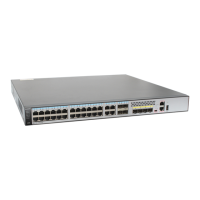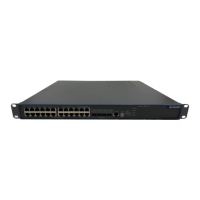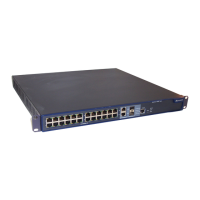Figure 1-3 Schematic diagram of SNMP operations
UDP Port161
NM Station
Agent
UDP Port162
get-request
get-response
get-next-request
get-response
set-request
get-response
trap
Table 1-1 gives details on the SNMP operations.
Table 1-1 SNMP operations
Operation Function
GetRequest Retrieves the value of a variable. The NM station sends the
request to a managed device to obtain the value of an object
on the device.
GetNextRequest Retrieves the value of the next variable. The NM station
sends the request to a managed device to obtain the status
of the next object on the device.
GetResponse Responds to GetRequest, GetNextRequest, and
SetRequest operations. It is sent from the managed device
to the NM station.
GetBulk Is an NMS-to-agent request, equaling continuous GetNext
operations.
SetRequest Sets the value of a variable. The NM station sends the
request to a managed device to adjust the status of an object
on the device.
Trap Reports an event to the NM station.
1.1.2 SNMP Features Supported by the S5700
This section compares SNMP versions in terms of their support for features and usage scenarios
to provide a reference for your SNMP version selection during network deployment.
The S5700 supports SNMPv1, SNMPv2c, and SNMPv3. Table 1-2 lists the features supported
by SNMP, and Table 1-3 shows the support of different SNMP versions for the features. Table
1-4 describes the usage scenarios of SNMP versions, which will help you choose a proper version
for the communication between an NM station and managed devices based on the network
operation conditions.
Quidway S5700 Series Ethernet Switches
Configuration Guide - Network Management 1 SNMP Configuration
Issue 01 (2011-10-26) Huawei Proprietary and Confidential
Copyright © Huawei Technologies Co., Ltd.
4

